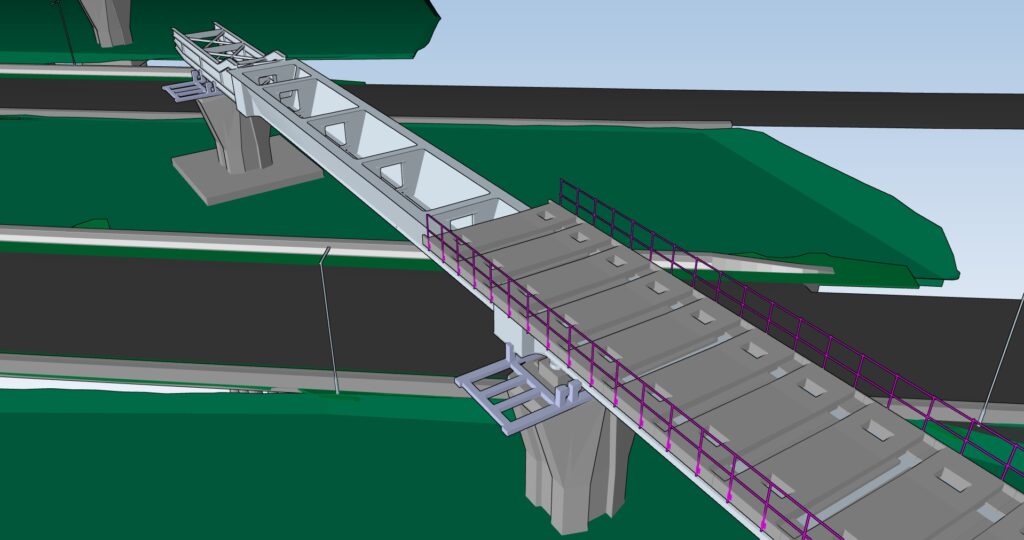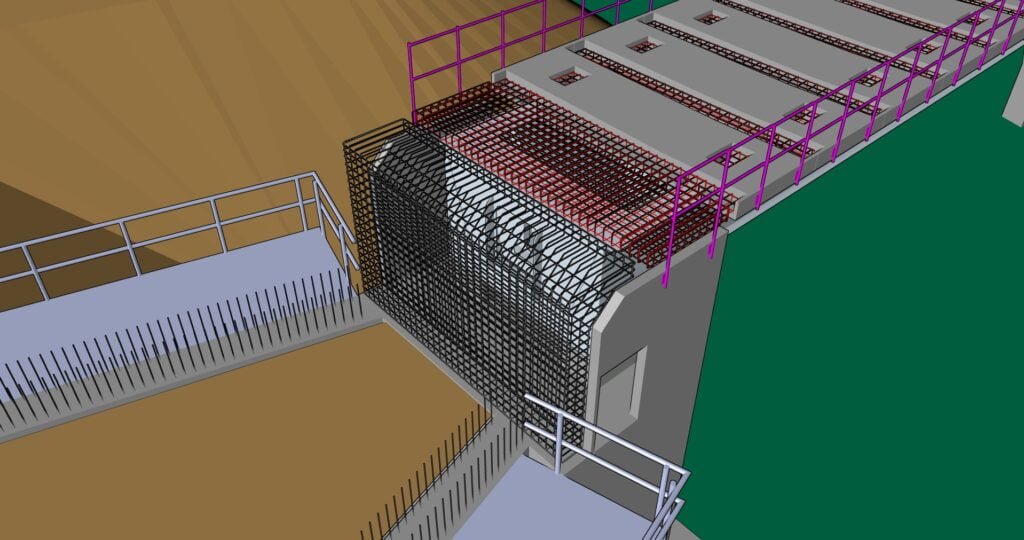Whitfield Consulting Services is widely recognised as having excellent BIM and CAD capabilities, far above expectations for a design house of our size. Since our inception, we’ve seen this skill enable our Tier 1 contractor clients to not only fully visualize the engineering project works for themselves but also to gain buy-in from end-clients at tender stage and throughout a project.
From Temporary Works solutions to marketing materials for concept designs, our team’s BIM modelling, 3D visualisations and animation capabilities have improved outcomes, provided reassurance and ensured constructability is always kept top of mind.
As early adopters of technology that we can see will add value to our clients’ projects, we recently embraced Synchro 4D, a construction scheduling and simulation software. Coupled with our existing capability, we identified that Synchro 4D offered further opportunities for Tier 1 project managers and their clients to visualize programming works, evaluate the effect of changes on a digital twin of the project and review construction sequences.
Read on to find out about how our use of Synchro 4D supports Tier 1 planning and tendering processes, and gives our clients a distinct advantage over their competitors.
What are the capabilities of Synchro 4D?
Synchro 4D enables the creation of one complete digital and interactive visual environment. We have been using this cloud-based software alongside our designs to plan work sequences, host digital rehearsals and enable ‘what-if’ scenarios. We see this having real value in validating and optimizing a project plan before construction takes place, identifying any potential risks or scheduling problems, and enabling informed decisions to be made.
Using Synchro 4D, we can integrate models created using CAD and CGI into a time-pegged 4D sequence that can be manipulated as needed to ensure every stage of a build, and each stage’s dependencies, are accurately captured and updated. Accompanying the models are databases of tasks within the construction sequence that can also be displayed in chart or graph format. Each frame of the animation is linked to the relevant tasks, so, if one task moves in the timeline, everything linked to it will be automatically updated, avoiding errors.
What we have found is that Synchro 4D adds value to existing methods because its purpose is not simply to create a nice-looking animation, but rather to create an integrated visual aid to programme and activity changes.
How does Synchro 4D accelerate the design and programming processes?
Animating construction sequences using traditional methods works well until a change is required.
Typically, for a designer to change a traditional animation sequence to include new stages of works or equipment will require extensive and painstaking additional drawing, rendering and re-sequencing. Depending on the complexity of the models and animation involved, this could add several days of additional lead time to the design and planning process and still stand alone from the programme update it is meant to reflect.
A key factor to note is that, if the specification of the equipment is yet to be confirmed, the animation can still be created with placeholder blocks and the equipment updated later on, whereas previously, waiting on information like this could halt the entire animation process.
What are the additional project benefits of using Synchro 4D?
As mentioned above, the laborious process of making changes to an animation leaves room for human error, but can also limit the amount of changes that can viably be made during the design process. This is especially true during construction, where very often unforeseen disruptions may be dealt with in a number of ways, but the client and project team want to explore and evaluate options for their impact on cost and programme. As Synchro 4D is able to quickly update the animation to reflect changes, it makes this process far more achievable than using traditional animation methods.
Synchro 4D enables improved flexibility in the design phase, allowing teams to experiment with specific elements of the delivery schedule and see the effects of this straight away. Furthermore, designs in Synchro 4D can be seen by anyone that has downloaded the free viewing software, so there is no need for sub-contractors or clients to purchase the software before they can enjoy the benefits of it when working with us.



Why we believe Synchro 4D is particularly advantageous in Rail and Power engineering
Rail and power engineering projects can be very complex in their nature, with many dependencies, especially in infrastructure upgrade projects. Synchro 4D has been created with such projects in mind and enables us to simulate real life challenges.
The collaborative element of Synchro 4D is a huge benefit, transforming the way Tier 1 companies and their sub-contractors work, as well as with their own clients. We can share an animation or digital twin on a Teams meeting, to help visually demonstrate the entire project for all stakeholders. This can make project design and planning more accessible, especially with remote working. It is especially helpful to assist time-pressured Project Managers who need to see any potential hold ups and be able to quickly get progress updates.
Another benefit of being able to work so collaboratively is that different disciplines can speak their minds about the design and see their ideas and advice put into immediate action, taking into consideration how this might affect other costs and timeframes. It encourages open discussion and allows us to tap into many different skillsets easily without fear of prolonging or interrupting the animation process.
Whilst Synchro 4D is relatively new to Civil Engineering, we predict great uptake over the next 2-3 years and believe that, as more Tier 1 companies begin to understand its capabilities, its use will become the norm for all of our design and consultancy projects.
For public sector works like HS2, some end clients are starting to require Synchro 4D competency to be demonstrated in the tendering process. Indeed, Highways England is already benefiting from Synchro 4D thanks to its capability and ease of supporting timeline planning traffic management and road closures for Temporary Works. So it’s important for our Tier 1 clients to have this on their radar and start to build reliable partnerships with Synchro 4D literate designers, in addition to upskilling their own CAD Technicians.
For more details on how we can use Synchro 4D to enable you to forecast anticipated project progress with confidence, please get in touch by emailing info@wcs-consult.co.uk or calling +44 (0)20 3581 7847.
